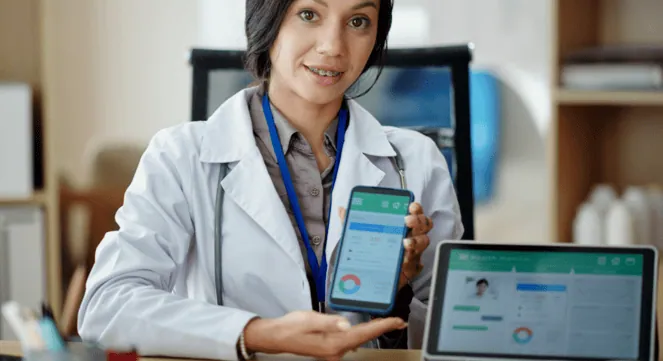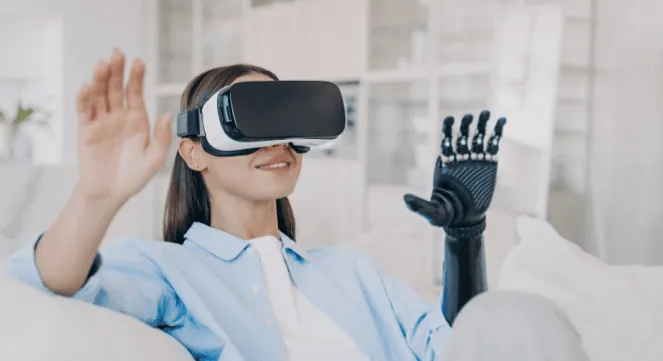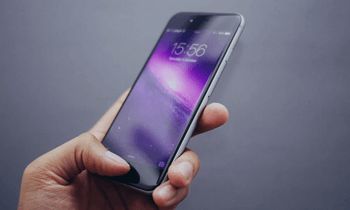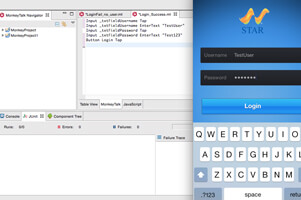The journey of patient care through the healthcare frameworks has evolved drastically in the past years. As the end goal to provide quality patient care remains intact, achieving the best outcomes for patients remains to be the end goal of delivering patient care services. This care delivery system has evolved at a rapid pace. Healthcare providers are balancing technology and patient care by leveraging the uncommon capabilities in the creation of safe, efficient, and improving patient care through capabilities.
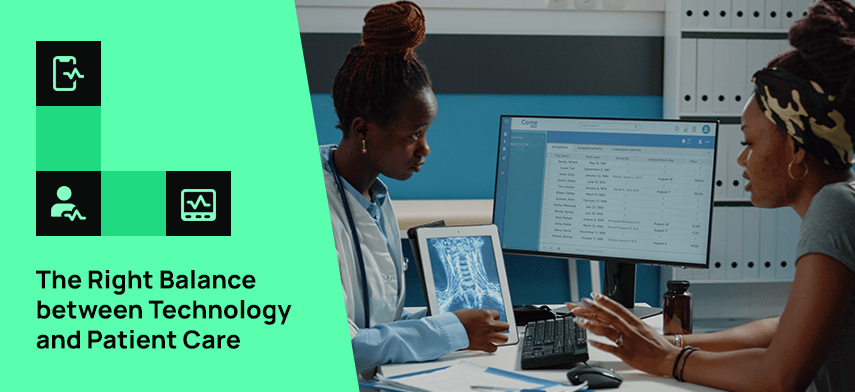
With technology improving healthcare outcomes, the best patient care still requires the touch of human elements. Hospitals and healthcare organizations balancing technology with personalized care delivery are maximizing the effectiveness of the quality of care delivered with optimal patient care experience for both providers and patients. Even under the high pressure to manage healthcare, technology quickens the pace to improve patient outcomes and works exceptionally hard towards improving care coordination amongst providers.
This noble goal does have is constraints when improving patient care through technology, but given the time, it can exactly be implemented according to the patient’s needs. The technology works as a time machine as it has integrated various facets into healthcare for building efficient and impactful care delivery services. With EHRs on the operational side of healthcare management, minute practices can become more efficient across all healthcare businesses by saving time, and effort, and providing cost-efficient healthcare solutions. Hence, improving patient-provider communication.
Integrating Technology to Improve Patient Care Delivery
As we progress further into integrating technology with healthcare, providers, nurse practitioners, MDs, and most healthcare staff members are trained to be clinically skilled and be acquainted with the technological improvements. With the development of challenges with a shortage in healthcare staff, leading healthcare organizations are developing and creating the right balance between technology and efficient workflow. Hence, withholding any imbalance that can hamper patient care or provider satisfaction.
To avoid this imbalance, balancing technology and patient care needs to simultaneously be considered in improving the efficacy of the new learning process in healthcare. The ever-changing healthcare environment can get overwhelming but with various patient care technologies, healthcare outcomes can become more efficient. These technologies can be broadly categorized under:
- Electronic patient records
- Telehealth/ Telemedicine services
- Online appointment scheduling for patients
- Streamlining the electronic documentation
- Proper information management to collaborate with workers remotely
- Reducing the errors in medication with advancements in prescription management, medication administration, and safety checks
- Expediting the communication and care coordination digitally
- Having the ability to involve nurses in scheduling or allowing them to self-schedule in the system
Contribution of Technology to Improve Patient Care
In healthcare systems, patients and individual practices conducted by providers can all be beneficial to the efficiencies created by the digital innovations in healthcare. When thoughtfully rolled out, these technological integrations can be seen to provide patient-first outcomes, hence, efficiently supporting the efforts of providers in offering effective care delivery services. This ultimately improves patient care outcomes. Here’s how:
1 Creating a window with healthcare technology
In the last five to six years, there has been a massive shift where healthcare transparency has been in favor of patients and providers. This transparency has been implemented across the healthcare board in every healthcare facet for tracking the departmental communication, collection of data, and how this data is analyzed and measured. Without technological integration, these workflows would not have been possible the integration of technological innovations in healthcare software. This includes EHRs and a forward trend toward digital-first RCM. As we face time constraints and limitations, a balanced health system can be achieved through the implementation of the right technology, improved communication between provers and patients, and analysis of data efficiently can free up providers to focus on better care delivery to patients.
2 Improved billing services
Healthcare billing is one of the most complex and important aspects of balanced health systems. Achieving the perfect accuracy in medical billing can be impossible as the number of organizational departments and individuals involved in the billing process. The huge advancement in medical coding software to reduce human errors has become the standardized norm in the billing process in the healthcare sector. Technological integration enables a faster, smoother flow in generating the revenue back to healthcare organizations from both patients and insurers. This also improves the patient experience with the process of billing and makes it as accurate as possible.
3 Integration advancements
Certain organizations have specialized in creating integrations that gel well with the practices of healthcare systems with the recent EHR software. These integrations allow providers to be paid immediately once the processing of claims has been completed, hence decreasing the gaps in practices and improving access to care delivery services. These technological integrations reduce the load on providers alone and improve the service provisions in a healthy and balanced way by enhancing patient care experiences.
Technology improving Patient Experiences
In recent times, patients are approaching their healthcare experiences the same way they approach the various other industries that are digitally supervised to gain that balance in healthcare outcomes. For thriving in the consumerist market, healthcare organizations are realizing the importance of digitization to have more involvement from patients regarding their health. The benefits of technological growth in healthcare have recognized certain aspects of improving patient care. They are:
1 Improved breakthroughs in research
The paradigm shift in healthcare comes with breakthroughs in research and development. To gain the right balance between technology and patient care, diagnostics and treatment plans offer providers better opportunities in capitalizing on the data collected and identifying newer methods to practice healthcare and medicine.
2 Increasing the access to healthcare
In 2019, it was recorded that 80 specialties in healthcare have been authorized to use the services of telehealth. This has increased the access to healthcare for employers and patients towards certain forms of digital healthcare deliveries to close the technological gap in healthcare accessibilities.
3 Recognizing and understanding patient needs
The key focus in improving patient care with technologies is to meet consumer expectations through understanding and recognizing the patient’s needs. Health system leaders have seen a growth in investment in healthcare technologies in the sector that captures the insights of patient experience metrics.
4 Lessening the wait times
As healthcare approaches a value0based incentive, providers are motivating patients to schedule online appointments to lessen the wait times at the clinics and healthcare organizations. To achieve the right balance between technology and healthcare, patients are enabled to have a smooth and seamless patient experience through technologically improved services provided by healthcare organizations.
Why Balancing Technology is Key?
Providers often lack the support and training that is built around the relationship and empathy-building capabilities. Addressing patient queries requires providers to be well informed and have acute knowledge regarding care delivery services. Sharing patient feedback with the necessary providers can create a direct sight towards improvement. The closer the encounter with care is with patient feedback, the sooner healthcare facilities can identify any emerging issues in the process of care delivery to improve patient experiences.
The key to improving patient care through technology is by understanding the impact of patient needs and addressing those expectations with empathy and compassion. As technology becomes a pivotal ground for evolution in the healthcare sector, implementing effective uses can continue to prove as a balancing act between provider-patient communication and relationship. This helps to process the convenience of healthcare access and makes it affordable. It helps providers and healthcare leaders in understanding the art of balancing the patient care journey.

Final thoughts,
Patient care technology and safety provide a touch towards personalized care delivery. The frontline workers are striving toward offering the best patient care possible and with the right digital health tools and technology, they can deliver care efficiently and safely. Hence, empowering hospitals in improving patient care. Hospitals and healthcare organizations must continue to invest in technology integration architectures which include the point-of-care tools for providers and healthcare practitioners in improving patient care experience. The EHR is one of the many steps in achieving this goal. Implementing additional technologies like pass-through cabinets and point-of-use embedded software in healthcare applications ensures patient safety and puts them at the forefront of receiving care services.
Efficiency in delivering care remains crucial, but it is also important to offer providers a safe and secure environment where providing the care becomes the top priority. Achieving patient balance and optimizing safety with integrated technologies establish an appropriate process that enhances comfortable retrieval of medications and reduces any risk associated with improving patient care through technology. Thus, achieving the right balance between technology and patient care is key to improving the patient care journey.
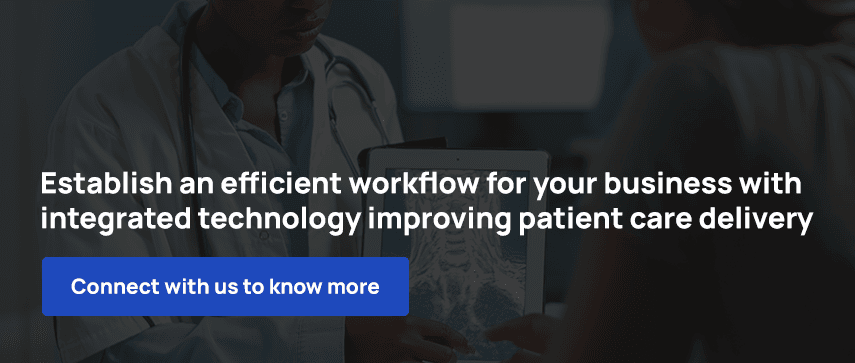
Author's Bio

Shailendra Sinhasane (Shail) is the co-founder and CEO of Mobisoft Infotech. He has been focused on cloud solutions, mobile strategy, cross-platform development, IoT innovations and advising healthcare startups in building scalable products.





